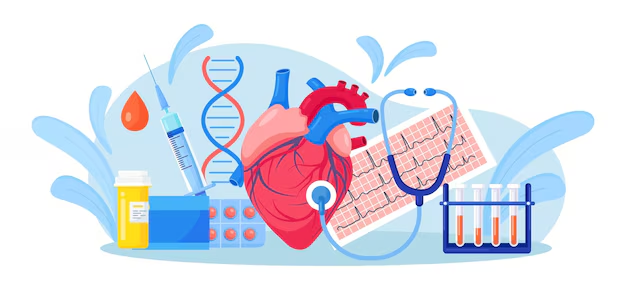Heart rhythm disorders, or arrhythmias, happen when the electrical signals that control your heartbeat malfunction. This can cause the heart to beat too fast, too slow, or irregularly. Cardiology focuses on diagnosing and managing these conditions to protect heart health and improve patient well-being. Specialists use various diagnostic tools to better understand arrhythmias and create personalized treatment plans.
1. Echocardiogram
An echocardiogram is one of the most widely used tools in cardiology for evaluating heart rhythm disorders. This non-invasive test uses sound waves to create moving images of the heart. By examining these images, cardiologists can assess the heart’s structure and function in detail. An echocardiogram can reveal complications such as valve abnormalities, structural defects, or areas of heart muscle damage. By identifying the underlying causes of arrhythmias, this test helps inform treatment approaches and encourages precise decision-making.
2. Stress Testing
Stress testing is designed to evaluate how your heart performs under physical exertion. By placing the heart under controlled stress, this test helps detect abnormal rhythms or symptoms that may not be apparent in a resting state. Typically, patients walk on a treadmill or pedal a stationary bike while their heart rate, rhythm, and blood pressure are monitored.
Sensors detect any irregularities that may indicate conditions such as ischemia or arrhythmias. Stress testing is beneficial when symptoms are intermittent or triggered by physical activity, allowing cardiologists to pinpoint specific concerns. This helps in creating more accurate treatment plans tailored to the patient’s needs.
3. Nuclear Imaging
Nuclear imaging uses advanced technology to investigate heart rhythm disorders. During the test, doctors inject a small amount of radioactive material into the bloodstream, which travels to the heart. Special cameras then capture detailed images of blood flow and cardiac function. This test reveals how well blood reaches the heart muscle and identifies areas of reduced blood flow, heart damage, or other factors causing arrhythmias. For patients with complex symptoms, nuclear imaging provides a clear picture of underlying conditions.
4. Holter and Event Monitoring
Holter and event monitoring are diagnostic tools that track and record your heart’s activity over time. They are typically used to identify irregular heart rhythms or other cardiac issues. These tools offer valuable insights to help your doctor diagnose and effectively manage heart conditions.
Holter Monitoring involves wearing a portable device that continuously records your heart’s electrical activity for 24 to 48 hours. It’s ideal for capturing irregularities that may not appear during a standard EKG conducted in a doctor’s office. Event Monitoring, on the other hand, is used for longer-term observation and is typically worn for weeks. Unlike the Holter monitor, it records only when you activate it during symptoms, or it may automatically detect irregular activity.
Both tests are non-invasive and simple to use. They play a key role in diagnosing cardiac conditions such as arrhythmias, atrial fibrillation, or unexplained dizziness and chest pain. These tools provide valuable insights to guide effective treatment plans for better heart health.
Find Quality Cardiology Care
If you or a loved one is experiencing symptoms such as palpitations, dizziness, or chest discomfort, speak to a cardiologist to explore diagnostic options. Early diagnosis can make a significant difference in maintaining heart health. Reach out today to schedule an assessment and take proactive steps to protect your heart.

